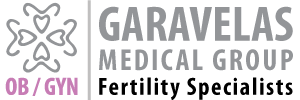Potential to produce healthy oocytes is limited
The reasons for postponing motherhood in the 21st century are different, such as making education a priority, working on a career or a business, meeting the proper partner later in life. Unfortunately ovaries have a limited reserve to produce healthy oocytes and with increase of the women’s age number of oocytes diminishes while their quality decreases. There is also a cohort of patients who are diagnosed with premature ovarian failure and need a solution.
Patients wish to have their own biological child
Faced with a tendency of women getting older at the beginning of planning their first pregnancy, as well as many patients being unable to produce eggs, doctors and scientists are looking to develop new techniques to help create healthy oocytes and improve hormonal and reproductive function of the ovaries. There are patients with early menopause, advanced maternal age, poor egg quality, low ovarian reserve, premature ovarian failure. All these patients wish to have their own biological child.
Unique technique – ovarian rejuvenation by injecting PRP
One of those unique techniques is ovarian rejuvenation by injecting PRP (platelet-rich plasma). PRP injections have been used clinically for many years in different areas of medicine – traumatology, surgery, burns, cosmetology, etc.
The purpose of PRP is to activate growth factors and stem cells in the tissue they are injected in. Stem cells can morph into any type of cell in the hu-man body, including oocytes, so platelet rich plasma is a proper biological stimulus for that morphological change.
How is a procedure of ovarian rejuvenation performed?
Each patient who is going to rejuvenate her ovaries should have initial consultation with fertility specialist and become qualified for it. After the initial consultation and collecting patient’s basic background information, we will draw some blood and do an ultrasound examination, then the patient will be asked to sign a consent form and we will be ready to schedule the procedure. For the procedure itself, the first step will be preparing the platelet-rich plasma. We will draw about 20 millilitres of blood, It will then be processed by the laboratory in order to extract about one millilitre of platelet-rich plasma. That process will take up to a couple of hours in the laboratory. The procedure itself will be scheduled immediately as soon as PRP has been prepared. The doctor will use a tiny needle (similar to the needle that we normally use for an egg retrieval) and under ultrasound guidance will inject the PRP distributing the material in a large area across the ovary. The procedure is done under anaesthesia.
PRP therapy is an absolutely safe procedure as the patient’s own blood is being used so there is no risk of infections or allergic reactions.
Who is qualified for ovarian rejuvenation procedure (PRP)?
- Women with premature ovarian failure (POF).
- Menopausal or perimenopausal women under the age of 50.
- Infertile women, over the age of 35, having low egg reserve and low Anti-Mullerian hormone levels.
- Women under the age of, who have low egg reserve and low Anti-Mullerian hormone levels.
How can we find out that an ovarian rejuvenation procedure was effective?
After ovarian rejuvenation procedure the patient is followed fairly intensely. We will monitor FSH, LH, Oestradiol , AMH levels to control the patient’s hormonal profile, as well as perform ultrasound evaluation in order to control the follicle growth.
We usually see a positive tendency (decrease in FSH and LH levels, increase in Oestradiol and AMH) within few months after the PRP procedure. Once AMH levels rise and FSH, LH and Oestradiol levels diminish, one can consider this a positive sign of the ovarian rejuvenation to be effective. We should keep in mind that the effect of growth factors could take up to 3-6 months to manifest, since this type of tissue transformation takes time, and every patient’s situation is different. As soon as a potential follicle growth is confirmed, we would supplement it with some fertility medications in order to maximize the chances of mature healthy oocytes retrieval. The advancement of ovarian rejuvenation offers hope for renewed fertility to women faced with the heart-breaking realities of advanced maternal age, low oocyte (egg) reserves, or either naturally occurring or premature menopause.
